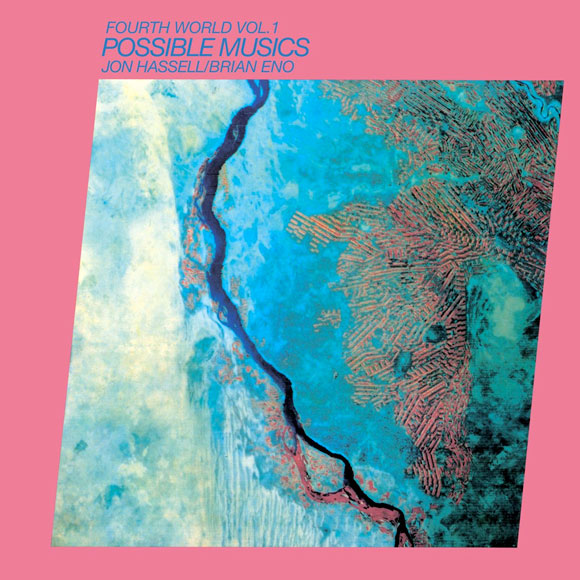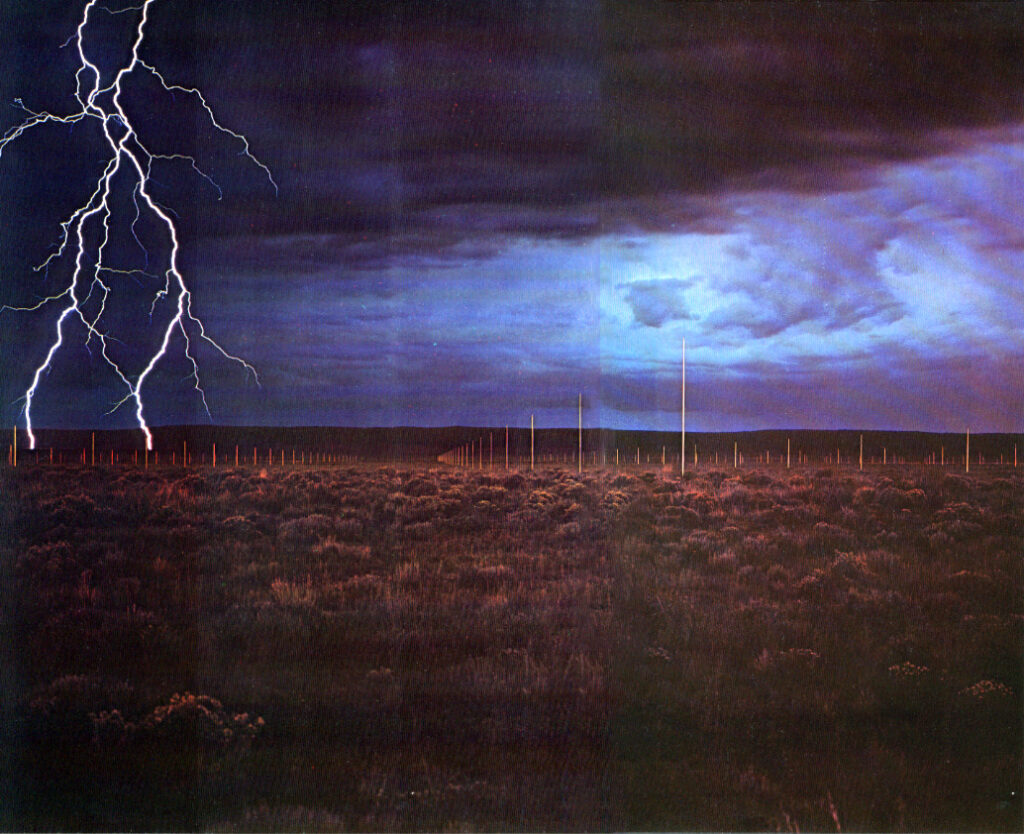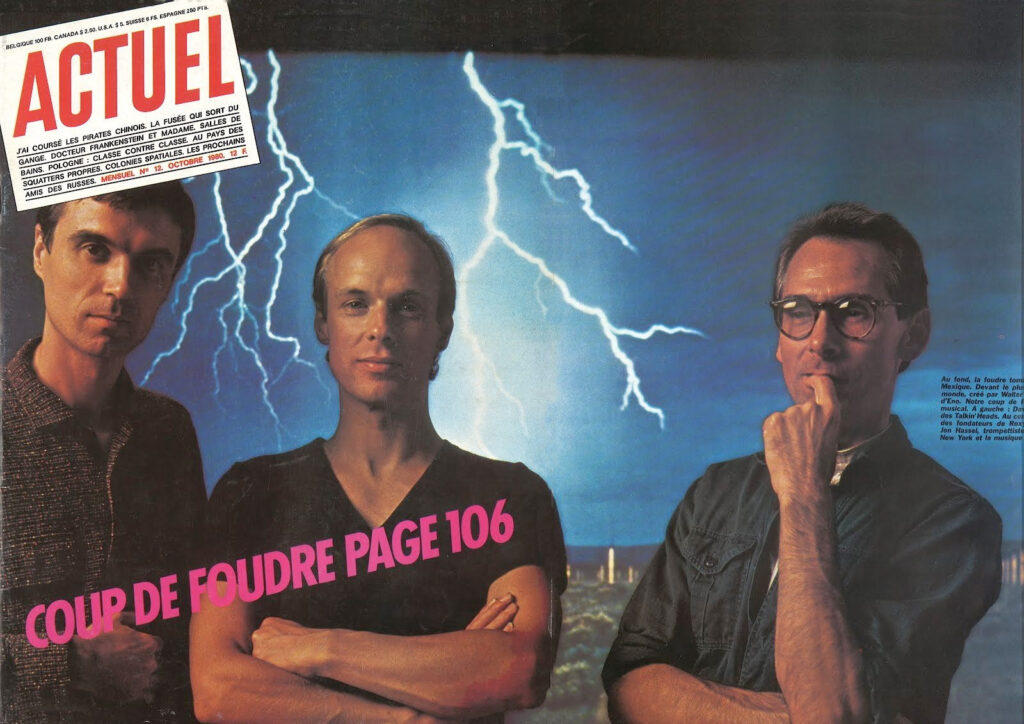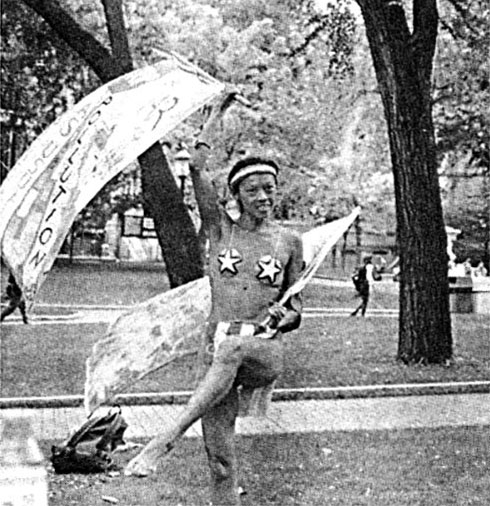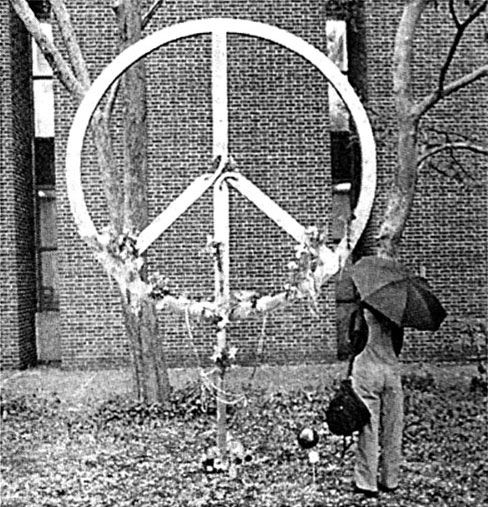Atmospherics
1980 | possible musics
First, let it be said that this title (and this record) form a powerful nucleus of two concepts which became extremely influential: the pluralizing of “music” to suggest that there is more than one (foreshadowing the “diversity” movement before the term “political correctness” poisoned the well) and the 1+3=4 formula as a symbol for an idealized interbreeding of “first” (technological) and “third” (traditional) world influences in a way that aspires to be both “metaclassical” and “metapop.”
This formulation framed a lot of possibilities that are still being explored and refined (and inevitably, banalized). In October 1977, I did a concert at The Kitchen (premiere showcase of the New York scene) which was supposed to feature some of the Earthquake Island musicians but that didn’t work out so I made some background textures from isolated tracks of the 24-track tape along with a transformation of the lush intro to a 10cc (the UK group) song into a “harmonic tambura” (another musician functioned as a kind of “tape DJ”, cueing all the backgrounds) and played over that with my newfound technofriend, the harmonizer.
A glowing New York Times review of this concert (“Jon Hassell, Trumpeter, Opens Vistas”) was a great moment of validation and inspired me to go beyond the diary entries of mounting despair (alternating with ecstatic notes of love about spicey soirées with the young French-Vietnamese trapeze artist, the svelte London model showing off her new Kamali bikini at my loft on Park Avenue South, and the soothing sweetness of the Spanish-Filipino with hypertrophy of the clitoris who later had an operation, became a model, then a nun).
The one piece of mine that I played for Pran Nath, and his approval (“Playing this instrument like no one before… they will line up for you around the block”) made me feel like a butterfly emerging from its chrysalis. The flavor was “mine” but the essence of his teaching, his “shape-giving”, was deeply embedded.
In June 1979, I did another Kitchen concert which introduced an early version of ‘Charm’.
This is the recorded version. As for the title, I was thinking of various aspects of “charm”: the snakey melodies of a snake charm(er), quark charm inphysics, girl charm (self-explanatory). This was the the long, bellwether, piece which recast clearly the three traditional raga elements into new forms: the tambura role being taken by the Burundi Cloud loop from Earthquake Island; the tabla role was taken by the udu (pottery drum from Nigeria), assisted by congas—all played live over downspeeded conga loops; and of course the solo role was the melismatic trumpet, here harmonized in parallel fourths with backwards echo (long reverb recorded on trumpet then tape played backwards so that the reverb begins from nothing and then rushes up to meet the note played).
Brian Eno was then living in New York and had picked up my Vernal Equinox record and—by his telling—had spent a lot of time that summer immersed in it, so he came up to me after the concert and introduced himself and suggested that we work together on something. So we started hanging out a bit, having dinner and long talks, some nights at the Mudd Club and we discovered a great flow together which has continued on and off to the present day. He was working with the Talking Heads on Fear of Music at the time, so David Byrne joined in the hang (an apotheosis of which was reached when we three white boys got mugged together at an outdoor Caribbean Festival in Brooklyn that developed into a full-fledged riot. Headline: uncomfortable social reality scrapes the knee of idealized rainbow-tribe visions. Too bad no pictures of this.) and I was turning them on to some music, mostly African, they hadn’t heard before on the French Ocora label.
That African wind—and some of my trumpet (on ‘Houses in Motion’)—can be heard blowing through the Talking Heads next record, Remain in Light and on into much of the music world during the coming years. So Brian and I—with David dropping by from time to time to check it out and, memorably, to offer his starpower on the record if desired—began work on Possible Musics at Celestial Sound and I, of course, called in the incomparable Nana who turned me on to Aiybe Dieng, a terrific Senegalese drummer, and Brian brought in some people he’d worked with, like Percy Jones, who did that great bass part on ‘Chemistry’:
My ongoing affection for the joyously polyphonic music of the Pygmies shows up in the call-and-response form of ‘Ba-Benzélé’.
Brian had great musical intuition and was brilliant at focusing attention on things which a “virtuoso” mindset would tend to overlook (e.g., the simple melody of ‘Delta Rain Dream’).
There was always mutual learning going on between us, a healthy creative tension and ultimately, a place of congruence between his art school, non-musician approach and my musicianly, composer-virtuoso view (probably a somewhat defensive one, since I’d spent lots of years getting to where I was and just who was this “amateur” who couldn’t read music!).
However, if I had been less naive I could have foreseen that—with “Eno is God” grafitti sprouting all over the NYC subways that summer—my strategy to offer him co-billing on the LP jacket for sales reasons would lead to years of trying to explain how my sound was already in place before Eno. It’s not that some form of co-billing wasn’t deserved, it’s just that my obscure “downtown” reputation guaranteed me a position in the shadow of his high-pop profile and the mood of pop critics of the time was to assume that he was the creator of all.
Anyway, the record got lots of attention (London Times, Rolling Stone, Vogue, Interview, Village Voice), including the “Ten Best Albums of 1980” list of the New York Times.
In Europe, Jean François Bizot, editor of the influential French magazine, Actuel, got wind of the ferment and came up with a double page foldout cover of Byrne and Eno and Hassell shot by Annie Liebovitz.
Brian had pushed E.G., his management company, into starting a label, Editions E.G., and I tried unsuccessfully to convince them that they should give a big push to this record in France based on the Actuel story. Apparently, they just didn’t have a clue that, in France, Actuel was like a combination of Rolling Stone and Time-Life all-in-one and that the “Fourth World” concept would flavor a sizeable portion of the music world’s output over the next 20 years. I remember Brian (“ambient”) and Terry Riley (“minimalism”) and myself (“fourth world”) hanging out at my house in West Hollywood a few years ago and remarking just how much of the current musical DNA could be traced back to my living room at that moment.
Meanwhile, I had been doing a few live concerts—the Mudd Club, Boston Institute of Contemporary Art, and the Art Gallery of Ontario. Partially to demonstrate that this music was not all coming out of the studio but was being performed live, I put ‘Griot’—from the AGO concert—on the record.
Finally, this was a time of trying to correlate the deep, traditional practice I had been following under Pran Nath along with my new “pop” associations and possibilities. I felt compelled to write something special for the press release (and for myself) which would put it all in context. The brief essay titled, “Some Answers To The Question, What Are Some Of The Possible Musics On This Planet At This Time?”, looks a little bit like the first “Fourth World” manifesto.
Thank god I kept agendas all these years. Jumbled together on a page are the mundane (daily notes to pick up things, career pitches, concerts, departure dates, deadlines) and the rhapsodic (usually the rising and falling flares of love and sex and music).
–jh
DIorama
di-o-ra-ma: A three-dimensional miniature scene with painted modelled figures and background
(VERBATIM NOTES IN RED)
10May79
lssey Miyake gives me the shirt off his back (literally) in the bar of the Algonquin. Daniela Morera, New York editor of Vogue Italia, had introduced us before and he had decided to use my music in his ultra-hip shows in Milan and Tokyo.
29July79 Sunday.
Louis Malle calls, tells me he likes very much the records I gave him. Wants to get in touch in September. We met at a party a few days before. In attendance, Margeaux Hemingway, Michel Piccoli who I had loved (and identified with) in Godard’s Le Mépris (Contempt). What an honor to have had a chance to chat with Louis Malle, this great film artist and music aficionado, to have a private, man-to-man, mock-lament together about how bereft we suddenly felt when the girls walked out of the room where we were. The records referred to must have been Earthquake Island, Vernal Equinox, maybe Pran Nath’s Evening Ragas.
10Aug80 Sunday.
The Morning of Madame Chang(e).
The most extraordinary event this AM in the park, walking Beeper, seeing Kathy Chang with amp and all: talking herself, social change, etc. and keeping really cute little girl movements with her body going all the time. Then I carry her amp and walk with her back up to hotel, we go to 333 (my loft), have breakfast, talk, smoke, she does stretching exercises and dances to Possible Musics in front of mirror. I was surprised to see that this was the way I had written it in my agenda that first day I met her; I learned later that she had actually added the “e”. Kathy drifted in and out of my life for a few months afterward and I hadn’t heard of her for 16 years until I opened the NY Times one day in October 1996 and saw her in her star-shaped bikini bra dancing with banners emblazoned “Pollution”, “War”, etc. under the headline “Penn Remembers a Woman Who Immolated Herself,” Kathy Change.
18Sept80
Meet Gil Evans for lunch at Chinese Restaurant on 7th Ave. We used to live in same building before I did the window thing and split for California. I’m dumbfounded to learn that he’s not rolling in royalties. (This is GIL EVANS, people! Porgy and Bess! Sketches of Spain! Into the Cool! If he were living in France he’d be wealthy and wearing the Legion D’Honeur.)
We walk over to Masabumi Kikuchi’s studio where Gil sits down at keyboard and lays down some changes. This whole idea—that I’m here with Gil Evans, watching him stretch out those fingers and find those chord voicings that were so deeply grooved into my soul—blows me away. What a dear, sweet man—
Flash forward to 2002: Having dinner with Miles Evans, his son, the (what else could he become with a name like that?) trumpet player, at Chan Dara in LA and ogling the Thai babes together. It feels good to maintain some contact with this noble lineage.
04Nov80
Write outline of EGH for presentation to Sam. Sam was one of the heads of the label, Editions E.G. “EGH” is Earth’s Greatest Hits. What a great idea: re-package the most incredible pieces at ethnic music-chosen by myself, Eno, and Robert Palmer of the NY Times—and return the profits to the tribes who made the music! Again, short-sightedness ruled and the world had to wait for the likes of Bob Geldof and Peter Gabriel.
27Nov80
Thanksgiving.
Nice gathering chez Brian and Alex with Walter, David Byrne, Kristine McKenna, Toni Basil, Laraaji. The Actuel cover gang celebrates: Brian Eno with his then girlfriend, Alex; Walter DeMaria, the earth artist; David Byrne of the Talking Heads with Kristine McKenna, the music writer and Laraaji, the ‘new age’ musician who Brian put on his Opal record label.
15Dec80
Late in 1980, who’ll notice that this was the point at which the word “perception” began being used by politicians. As I remember it was Alexander Haig, Secretary of State under Reagan, who I first noticed “re-purposing” this concept into geopolitical discussions. I often think about how words slide into the public vocabulary and how fuzzy that point of entry is and suddenly you hear it everywhere. And about how you have to have lived long enough to experience a cycle like that before you can be aware of it. And about how, many millions of other things all had entry points before I came into the picture and which I’ll never have time to know about.
23Dec80
Back home in Memphis for Christmas, receive FedEx package with congratulatory note from Walter DeMaria attached to copy of New York Times. This was my first look at the “Ten Best Records of 1980” list with Possible Musics cited.

